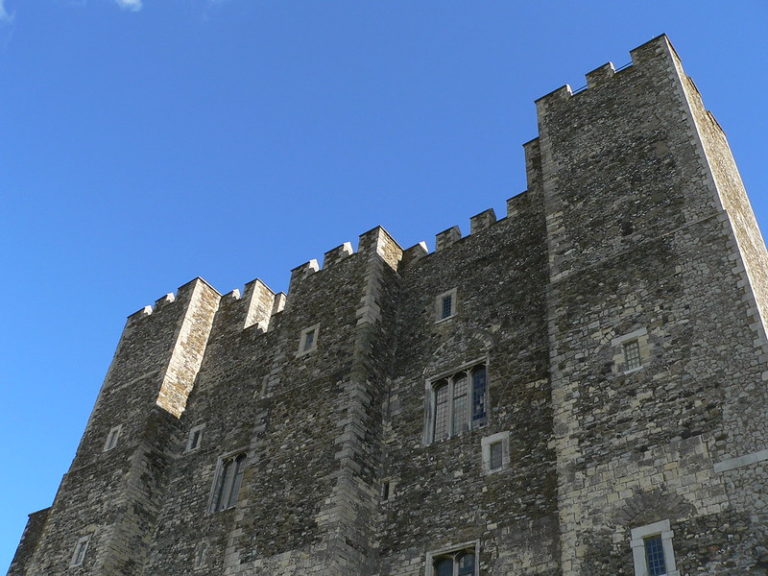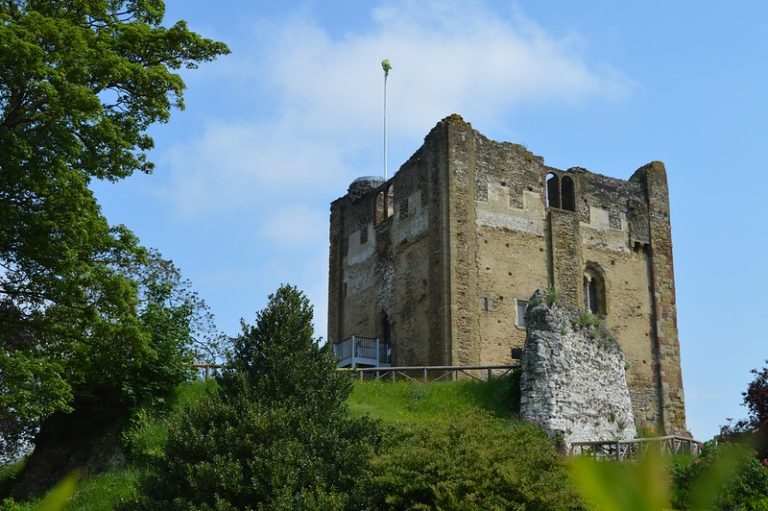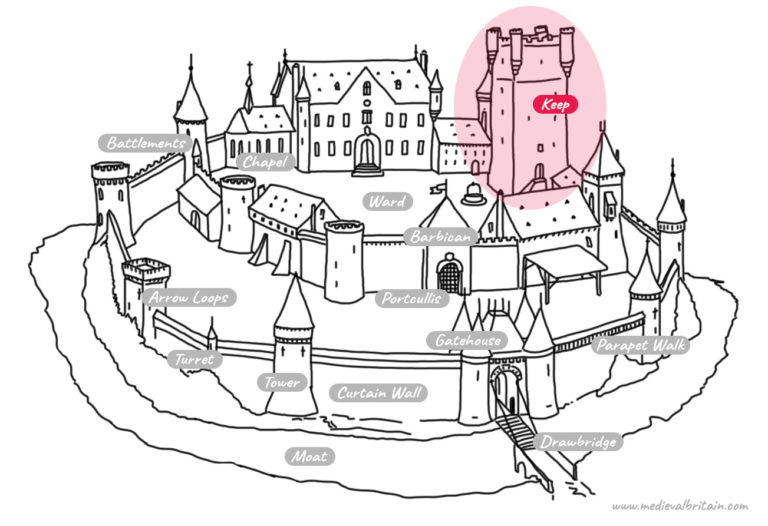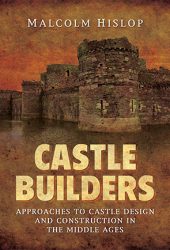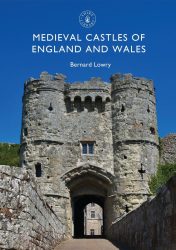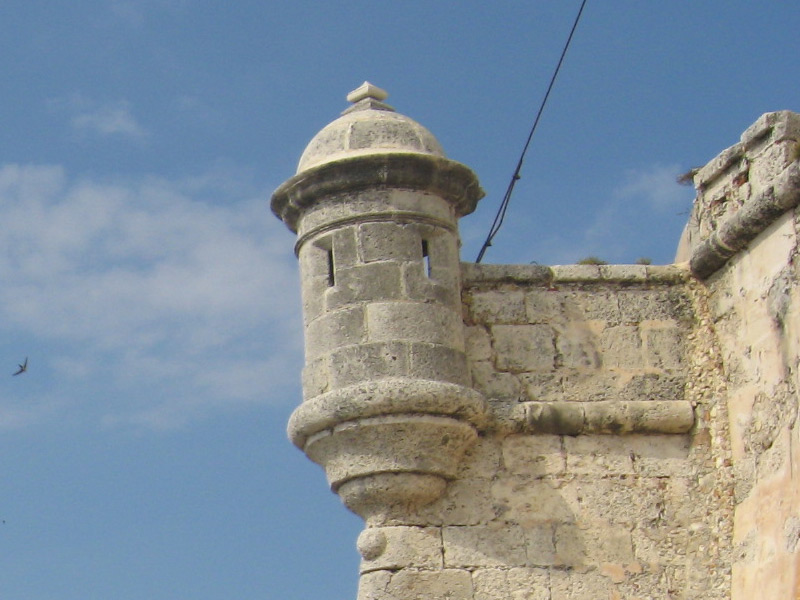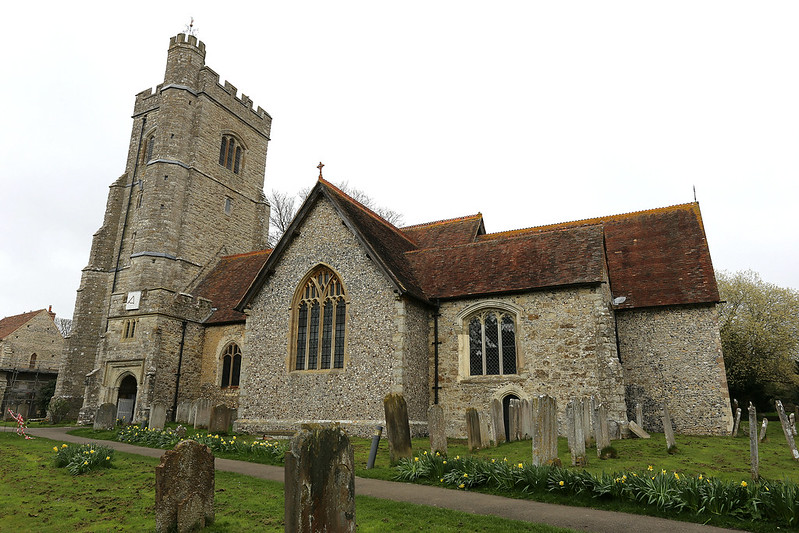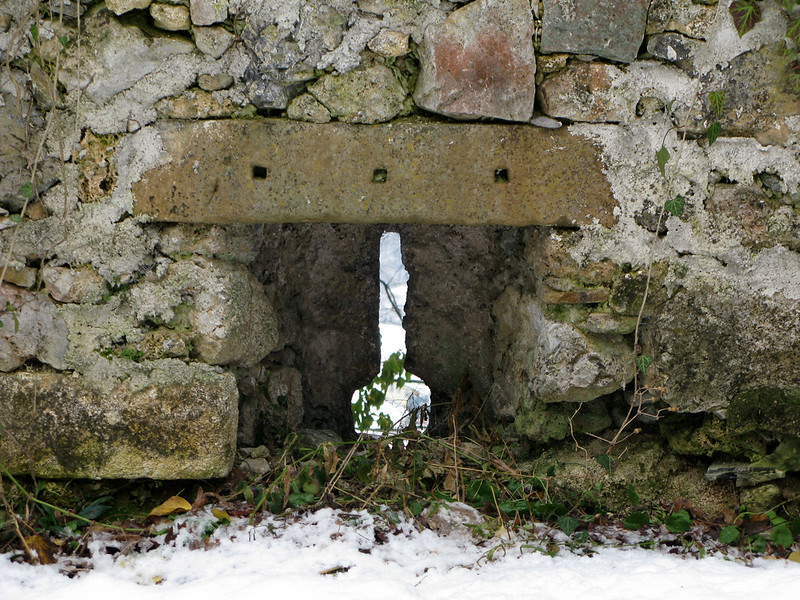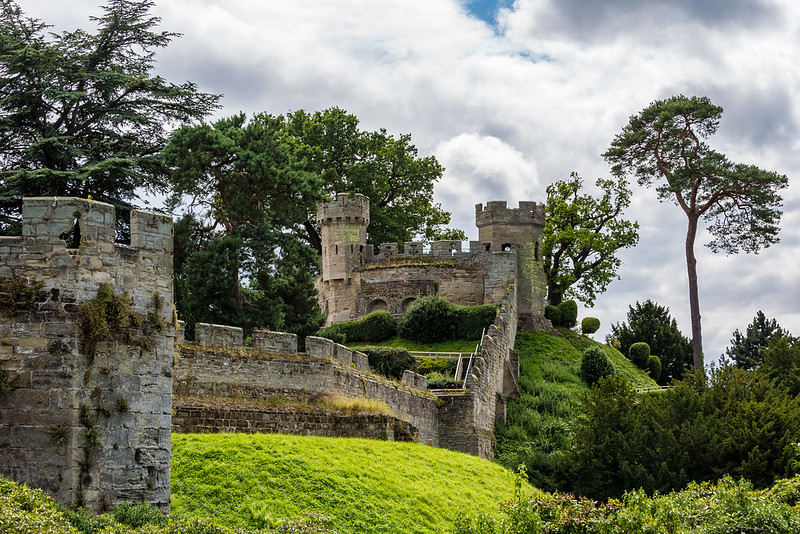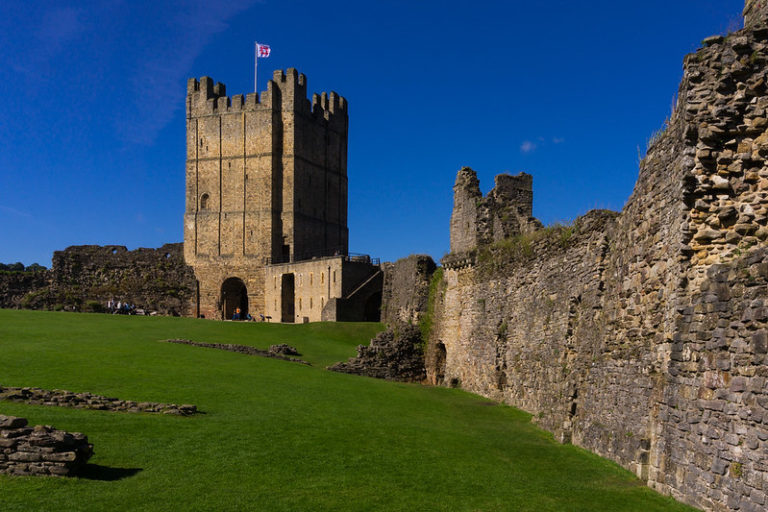
A castle’s Keep is the strongest portion of a medieval fortification and the last resort in case of a siege or attack. It was usually a fortified tower built within the walls and used as a last refuge in case of an attack.
The name keep derives from the Middle English kype, meaning basket or cask. Early on, the term was used for towers in a castle that would work as both fortifications and high-status residences.
The typical Norman keep is square or rectangular, with circular shell keeps. There are three different types of keeps: Motte and bailey, stone keep, and concentric.
Quick jump to: Battlements – Chapel – Keep – Ward – Barbican – Arrow Loops – Turret – Tower – Portcullis – Moat – Gatehouse – Curtain Wall – Drawbridge
History of the Keep
The first keeps were made of timber and were a key part of the motte and bailey castle – which emerged in Normandy and Anjou in the 10th century. The design then spread to England, South Italy and Sicily, as well as Wales and Ireland.
During the 12th century, new designs were introduced in France and England. English keeps included, for example, polygonal towers; while Philip II of France built a sequence of circular keeps on his new territories.
Keeps became comprised by the emergence of improved artillery. For example, during the war of the Roses in 1464, the keep in the Bamburgh Castle (considered impregnable) was defeated with bombards. Many keeps were then destroyed in the 17th and 18th century or incorporated into gardens.
Timber Keeps
Timber keeps are amongst the earliest examples of motte-and-bailey castle fortifications. They were used from the 10th century onwards (Fulk III and Geoffrey II of Anjou built a great number of them between 987 and 1060). This type of keep was introduced to England by William the Conqueror when he invaded in 1066. The design spread through South Wales in the subsequent decades.
A motte and bailey castle included an artificially constructed mound and a lower walled enclosure. On top of the motte was built a keep, usually with wooden brestaches or structures overhanging from the upper floors to enable better defences. Wooden keeps were relatively easy to build and could reach impressive dimensions.
Early Stone Keeps
Stone keeps began expanding after the 10th century. Some existing timber fortifications were rebuilt in stone, and the process usually started with the keep. There were several designs emerging across France and England: Four-sided keeps (known as Norman keeps or Great keeps) and circular shell keeps.
The transition from timber to stone usually took several years to complete. Unlike timber and earthworks, which can be built using serfs or unfree labour, stone keeps required skilled craftsmen. They were erected using lime mortar. The process was quite slow: Only about 12 feet in a year.
Later Stone Keeps
Stone keeps of the 12th century began to show new designs across France and England, breaking the previous unit of regional variations. In France, Phillip II started to construct circular castles in his newly conquered territories. Although Iberian castles were round, there were no military advantages – Phillip used them to demonstrate his new power. In England, polygonal and angular keeps became popular.
By the 13th century, french and English castles combined quadrangular designs with machicolated corner towers, gatehouses and moats. Grander keeps were still developed during the 15th and 16th century in England and wales. These large tower keep improvements reflected improvements in security along the Scottish border and the rise of regional families such as the Percies and Nevilles. Some keeps began to be built in brick. By the 16th century, the gatehouse had overtaken the keep as the most fashionable feature.
